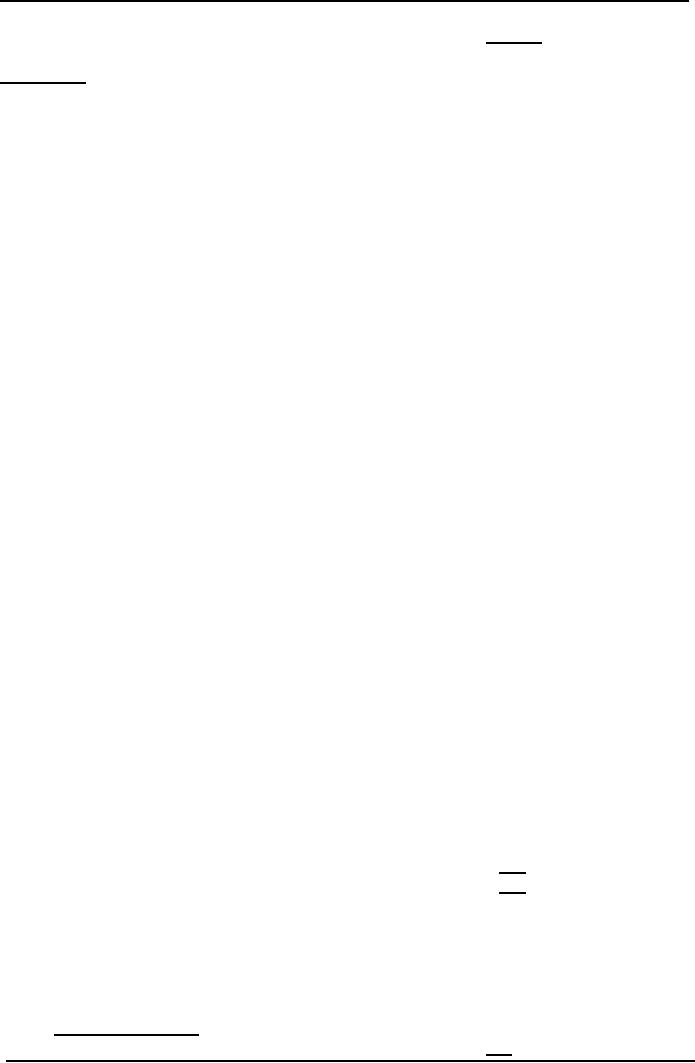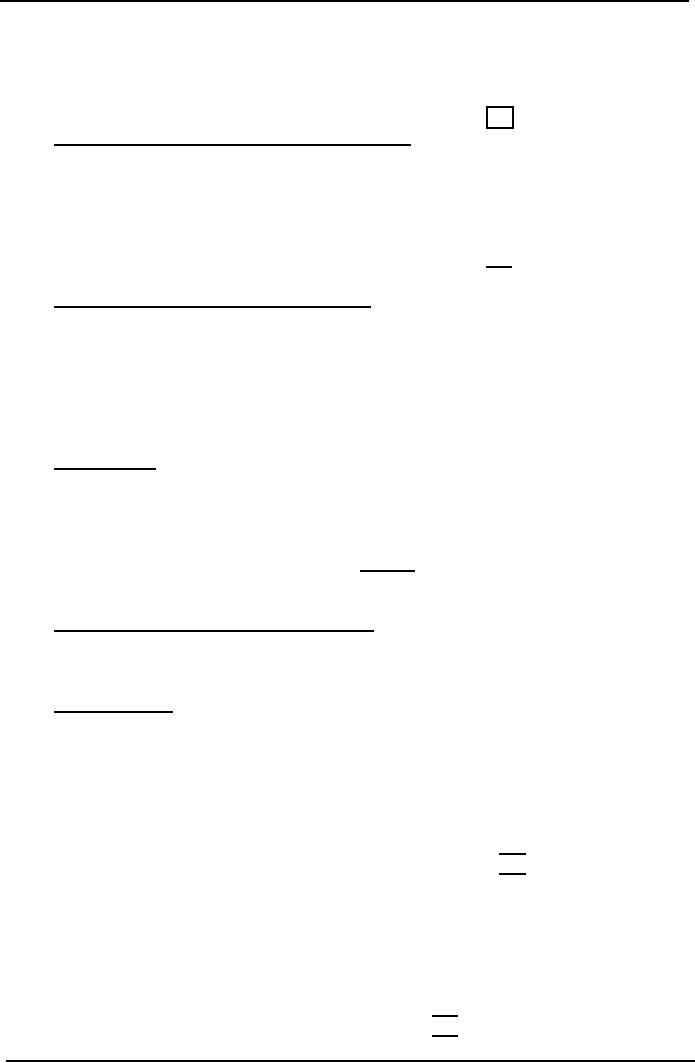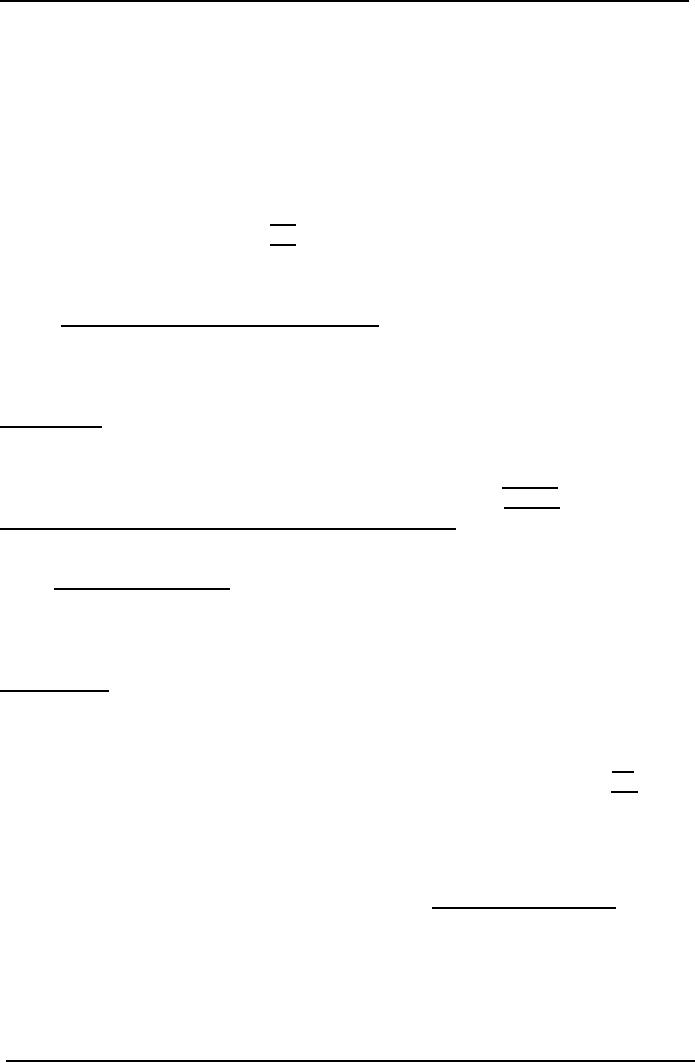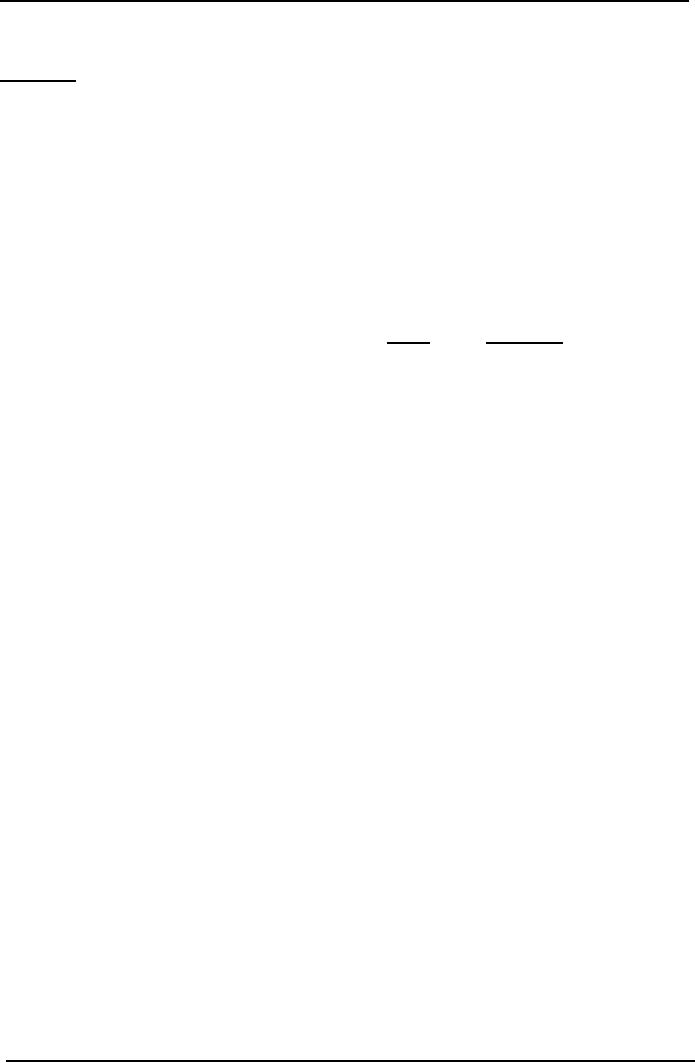 |
PROCESS COSTING SYSTEM:PRACTICE QUESTION |
| << PROCESS COSTING SYSTEM:Normal Loss at the End of Process |
| PROCESS COSTING SYSTEM:Partially-processed units, Equivalent units >> |

Cost
& Management Accounting
(MGT-402)
VU
Total
cost
414,840
Unit
Cost of Units Transferred
out:
Rs.
414,840
=
25.9256
16,000
units
The
logic of charging cost of normal loss at
the end of process only to
completed units is that
these
units have goon through
quality inspection, whereas, units
still in process are yet to
pass the
inspection,
of-course, units till in
process include spoiled
units as well. Therefore,
units in work in
process
ending inventory shall be charged with
the cost of spoiled units,
.1cluded therein, only
after
these units will have
goon through quality inspection. In
many industries units
being
processed
in a department are checked at a
definite stage before the
end of process, say at 75%
or
90%
stage of completion. In this
case cost of normal loss is
charged only to those nits
which have
passed
through the stage at which
quality check is made. These
units may be still in
process or may
have
been completed and transferred
out.
Abnormal
Loss
Abnormal
loss is the loss of units
not expected to arise under
efficient operating conditions. It
is
not
inherent in the manufacturing
process; instead, it is on account of
some accident or
carelessness.
The reasons of abnormal loss
include defective materials or poor
workmanship,
machine
breakdown or some other contingency.
Abnormal loss represents inefficiencies
in the
manufacturing
process; therefore, it is improper to
treat it as a part of product cost of
good units.
Cost
of abnormal loss is treated as
separate
unfavorable item and is
shown as such in cost of
production
report. It is debited to factory
overhead control account or to a
separate expense
account
to be charged directly against
revenues of the period and is
credited to the departmental
work
in process control account. Being an
indicator to inefficiency, abnormal
loss requires
immediate
attention of management.
For
the purpose of computing unit
cost, units of abnormal loss
are, included in
equivalent
production
after adjustment for degree
of completion. Consequently unit cost
represents, cost per
unit
as if there were no
loss.
PRACTICE
QUESTION
Q.
3
Mini
Soap Manufacturing unit completed
and transferred out 600
soaps to department-11 at
the
end
of the week. In department-11
450 soaps completed and
transferred to finished goods.
Units
which
were still in process 100
and 50 units lost (Normal).
Units in process 100% with
the
reference
of material and 60% with
conversion cost.
Rs.
Cost
received from preceding
department
540
Following
costs were incurred by
department-II:
Direct
Material
150
Direct
Labor
112
Factory
overhead
168
430
970
Required:
Prepare cost of production
report
Solution:
Cost
of Production Report
Department-II
I-Quantity
Schedule:
Units
received previous
department
600
144

Cost
& Management Accounting
(MGT-402)
VU
Units
completed and transfer to
Finished
goods
450
Units
still in process
100
Units
lost (Normal)
50
600
II-Cost
Accumulated in the Department /
Process:
Rs.
Cost
received from preceding
department
540
Cost
added by department-11:
Direct
Material
150
Direct
Labor
112
Factory
overhead
168
430
970
III-Calculation
of Equivalent Units
Produced:
(100%
of completed units + % of units in
process)
Units
completed in department-I = 450 + 100 =
550
Direct
Material:
450+(100x100%)
=
550
Direct
Labor :
450+(100x60%)
=
510
F.O.H
:
450+(100x60%)
=
510
IV-
Unit Cost:
Previous
department = 540 / 550 =
0.98182
Direct
Material
150
/ 550 = 0.272727
Direct
Labor
112
/ 510 = 0.21961
F.O.H
135
/ 510 = 0.32941
1.80357
V-
Apportionment of the Accumulated
Cost :
Transferred
to finished goods
450
x
1.80357
812
Work
in process:
Cost
of preceding department
(100
x 0.98182)
98
Direct
Material
(100
x0.272727)
27
Direct
Labor
(60
x 0.21961)
13
F.O.H
(60
x 0.32941)
20
158
970
Transfer
to Finished Goods
Cost
of preceding department (450 x
0.98182)
442
Direct
Material
(450
x0.272727)
123
Direct
Labor
(450
x 0.21961)
99
F.O.H
(450
x 0.32941)
148
812
145

Cost
& Management Accounting
(MGT-402)
VU
Q.
4
Mini
Soap Manufactures Co.
started to incurring cost in
first department for 1000
soaps. At the
end
of the week 600 soaps
were completed and 300 still
in process . 100% of direct material
had
been
incurred. But 75% conversion
cost was yet incurred on
the incomplete work. Remaining
100
units
were abnormally lost (completed
100% material, 50% conversion
cost)
Following
in the detail of cost
incurred:
Direct
material Rs.
500
Direct
labor
225
Factory
Overhead
135
860
Required:
Prepare cost of production
report
Cost
Of Production Report
Department-I
III-Calculation
of Equivalent Units
Produced:
Direct
material:
600+(400x100%)+(100x100%)
= 1000
Direct
labor : 600+(300x75%)+(100x50%) =
875
F.O.H
:
600+(300x75%)+(100x50%)
= 875
IV-
Unit Cost:
Direct
material:
500/1,000
=
0 .50
Direct
labor :
225/875
=
0.25714
F.O.H
:
135/875
=
0.15428
0.91142
V-
Apportionment Of the Accumulated
Cost to Finished Goods:
Cost
of units transferred to the
next department
600
x
0.91142
=
547
Closing
W.I.P Inventory:
Direct
Material
300
x 0.50
=
150
Direct
Labor
300
x 75% x 0.25714
=
58
F.O.H
300
x 75% x 0.15428
=
34
242
Abnormal
Loss
Direct
Material = 100 x 0.5
=
50
Direct
Labor = 50 x 0.25714
=
13
FOH
=
50 x 0.15428
= 8
71
860
Problem
Question
Q.
1
Orient
Industries. Limited produces a
product that passes through
two departments. Production
data
for the first month of its
operations are as follow:
Department
A Department B
Production
Costs:
Rupees
Rupees
Direct
materials
140,000
28,000
Conversion
costs
200,000
70,000
Units
Units
Production
units:
Started
/ received in process
23,000
13,000
Transferred
out
18,000
13,000
Still
in process
2/3
complete
3,000
146

Cost
& Management Accounting
(MGT-402)
VU
1/5
complete
2,500
In
department B there is an abnormal
loss of 1,500 units when
1/3 complete.
Required:
Prepare
cost of production report
for the month
Q.
2
Delight
Food Products produces 'Squash
Cubes" by continuous processing.
During February 19 -'
producing
department XYZ
received
8,000 cubes from the
preceding department aI1d
after
processing,
transferred 5,500 cubes to
next department. During the
month there was normal
loss
of
400 cubes at the end of
process. 600 cubes, 75%
converted, were lost due to
negligence of a
worker.
There was no work in process
beginning inventory, the ending inventory
was estimated as
60%
converted. Following product
costs were charged to the
department during February:
Rs.
Cost
from preceding
department
16,400
Direct
materials
2,000
Direct
labor
3,625
Factory
overhead
5,075
Rs.
27,000
In
department XYZ
all
materials are added at the
start of process.
Required: Cost
of production report for February
2006
Q.
3
Quantity
schedule of Mirza and
Company shows that 12,000
units were started in
process during
the
month of June. 7,000 units
were completed and transferred to
next department. 4,000
units,
25
% complete as to materials and 50%
complete as to labor and factory
overhead, were in
process
at the end of June. The
remaining units were lost
during processing. Costs
incurred by the
department
were materials Rs. 90,000
labor Rs. 70,000 and
factory overhead Rs. 50,000.
.
Required: Cost
of production report for the
month.
Q.
4
Tahir
Manufacturing Company uses
process costing. Costs of direct
materials, direct labor
and
factory
overhead incurred by department A
during April 2000, were
Rs. 25,000, Rs. 30,000
and Rs.
20,000
respectively. The quantity schedule
shows that 8,000 units
were started in process.
5,000
units
were transferred to next
department. 2,000 units were
still in process (all
materials, 50%
labor
and 25 % factory overhead). The remaining
units were lost, in
process.
Required:
Cost
of production report for
April, 2000.
Q.
5
During
April, 20,000 units were
transferred in from Department A at a
cost of Rs. 39,500.
Materials
cost of Rs. 6,500 and
conversion cost of Rs. 9,000
were added in Department B.
On
April
30, Department B had 5,000
units of work in process 60% complete as
to conversion costs.
Materials
are added in the beginning of
the process in Department
B.
Required: Cost
of production report.
147
Table of Contents:
- COST CLASSIFICATION AND COST BEHAVIOR INTRODUCTION:COST CLASSIFICATION,
- IMPORTANT TERMINOLOGIES:Cost Center, Profit Centre, Differential Cost or Incremental cost
- FINANCIAL STATEMENTS:Inventory, Direct Material Consumed, Total Factory Cost
- FINANCIAL STATEMENTS:Adjustment in the Entire Production, Adjustment in the Income Statement
- PROBLEMS IN PREPARATION OF FINANCIAL STATEMENTS:Gross Profit Margin Rate, Net Profit Ratio
- MORE ABOUT PREPARATION OF FINANCIAL STATEMENTS:Conversion Cost
- MATERIAL:Inventory, Perpetual Inventory System, Weighted Average Method (W.Avg)
- CONTROL OVER MATERIAL:Order Level, Maximum Stock Level, Danger Level
- ECONOMIC ORDERING QUANTITY:EOQ Graph, PROBLEMS
- ACCOUNTING FOR LOSSES:Spoiled output, Accounting treatment, Inventory Turnover Ratio
- LABOR:Direct Labor Cost, Mechanical Methods, MAKING PAYMENTS TO EMPLOYEES
- PAYROLL AND INCENTIVES:Systems of Wages, Premium Plans
- PIECE RATE BASE PREMIUM PLANS:Suitability of Piece Rate System, GROUP BONUS SYSTEMS
- LABOR TURNOVER AND LABOR EFFICIENCY RATIOS & FACTORY OVERHEAD COST
- ALLOCATION AND APPORTIONMENT OF FOH COST
- FACTORY OVERHEAD COST:Marketing, Research and development
- FACTORY OVERHEAD COST:Spending Variance, Capacity/Volume Variance
- JOB ORDER COSTING SYSTEM:Direct Materials, Direct Labor, Factory Overhead
- PROCESS COSTING SYSTEM:Data Collection, Cost of Completed Output
- PROCESS COSTING SYSTEM:Cost of Production Report, Quantity Schedule
- PROCESS COSTING SYSTEM:Normal Loss at the End of Process
- PROCESS COSTING SYSTEM:PRACTICE QUESTION
- PROCESS COSTING SYSTEM:Partially-processed units, Equivalent units
- PROCESS COSTING SYSTEM:Weighted average method, Cost of Production Report
- COSTING/VALUATION OF JOINT AND BY PRODUCTS:Accounting for joint products
- COSTING/VALUATION OF JOINT AND BY PRODUCTS:Problems of common costs
- MARGINAL AND ABSORPTION COSTING:Contribution Margin, Marginal cost per unit
- MARGINAL AND ABSORPTION COSTING:Contribution and profit
- COST – VOLUME – PROFIT ANALYSIS:Contribution Margin Approach & CVP Analysis
- COST – VOLUME – PROFIT ANALYSIS:Target Contribution Margin
- BREAK EVEN ANALYSIS – MARGIN OF SAFETY:Margin of Safety (MOS), Using Budget profit
- BREAKEVEN ANALYSIS – CHARTS AND GRAPHS:Usefulness of charts
- WHAT IS A BUDGET?:Budgetary control, Making a Forecast, Preparing budgets
- Production & Sales Budget:Rolling budget, Sales budget
- Production & Sales Budget:Illustration 1, Production budget
- FLEXIBLE BUDGET:Capacity and volume, Theoretical Capacity
- FLEXIBLE BUDGET:ANALYSIS OF COST BEHAVIOR, Fixed Expenses
- TYPES OF BUDGET:Format of Cash Budget,
- Complex Cash Budget & Flexible Budget:Comparing actual with original budget
- FLEXIBLE & ZERO BASE BUDGETING:Efficiency Ratio, Performance budgeting
- DECISION MAKING IN MANAGEMENT ACCOUNTING:Spare capacity costs, Sunk cost
- DECISION MAKING:Size of fund, Income statement
- DECISION MAKING:Avoidable Costs, Non-Relevant Variable Costs, Absorbed Overhead
- DECISION MAKING CHOICE OF PRODUCT (PRODUCT MIX) DECISIONS
- DECISION MAKING CHOICE OF PRODUCT (PRODUCT MIX) DECISIONS:MAKE OR BUY DECISIONS